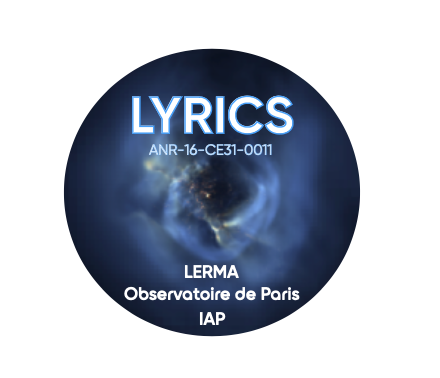A unique Smoking gun evidence of the influence of an AGN on its large-scale surrounding environment is found in brightest cluster galaxies (BCGs). The combination of (i) radio-jet emission from energetic particles expelled by the active galaxy nucleus and (ii) X-ray emission from the hot intra-cluster gas (ICM) mapped by the satellites Chandra and XMM-Newton revealed huge ICM cavities all along the radio-jet emission. This is the only firm direct evidence of a SMBH-ICM interaction on large scales, where the radio jet has pushed the hot gas, and dug the ICM cavities. The enthalpy necessary to inflate the cavities is of the same order as the gas cooling energy. Thus the energy produced by the AGN can in principle prevent the cooling catastrophe and the existence of over massive central cluster galaxies in the local Universe (e.g. Peterson & Fabian 2006). The compression of the hot gas at the cavity border can trigger gas cooling (either entrained or infalling), visible in molecular emission (Salomé et al 2006). Observed around these galaxies is a complex network of filaments, with gas bubbles uplifted by buoyancy, and gas inflowing to fuel the AGN. While there is no doubt about the reality of the interaction, there is no direct measurement of the feedback effect (either triggering or quenching of star formation).
The cores of clusters of galaxies are complex and violent environments that represent a crucial test for many aspects of galaxy formation and evolution. Many of the most well studied radio galaxies are associated with the brightest cluster galaxy in a cluster core, e.g. Virgo-A, Perseus-A, Cygnus-A and Hydra-A, and these cluster sources range from canonical FR-Is (e.g. 3C31) to the lowest redshift FR-IIs (e.g. Cygnus-A and Hercules-A). Over the past 30 years there has been heated debate over the fate of gas cooling in the cores of clusters and groups of galaxies. In the absence of heating, X-ray observations predict that gas within the central 100–200 kpc of most clusters will lose all its thermal energy in less than a Hubble time (see Fabian 1994 for a review).
From pre-XMM-Newton and Chandra X-ray observations, the amount of gas cooling and condensing into a molecular “sink” was predicted to be > 1012 Msun, contrary to observations in the sub-mm. However, more sensitive and systemic surveys for CO in clusters do find molecular gas masses of 1010-11 Msun (Edge 2001, Salome & Combes 2003) and new X-ray observations have revealed much reduced cooling rates and a sharp truncation in cooling at low X-ray temperatures (see review by Peterson & Fabian 2006). The combination of the optical, sub-mm and X-ray observations coincides with the discovery of very energetic outbursts from the massive black hole in the central galaxy that inject mechanical energy into the intracluster medium through the action of “bubbles” of non-thermal plasma (Fabian et al. 2003, 2006; McNamara et al. 2005). This interaction of gas cooling, the fuelling of the AGN , the subsequent disruption of the cooling and hence of the black hole fuel supply, are central to the growing consensus in the community of an AGN-regulated growth of galaxies. They are also key issues in the wider debate about galaxy formation (e.g. Bower et al. 2006), and highlight the possibility that group and cluster cores can serve as local “laboratories” for the study of feedback mechanisms for galaxy formation at higher redshifts.
Despite the traditional picture of elliptical galaxies as being “red and dead”, observations have shown that a significant fraction of this population contain quantities of molecular and atomic gas which can fuel star formation or AGN activity. Cool gas is also associated with the central dominant ellipticals of galaxy clusters (e.g., Edge 2001, Salomé & Combes 2003, Donahue et al. 2011), and is now generally believed to be the product of cooling from the hot, X-ray emitting intracluster medium. Whereas cold gas in individual ellipticals typically forms rings or discs, the material around cluster-dominant galaxies was found in extended filaments in prototypical objects (e.g., Salomé et al. 2006, McDonald et al. 2011, Lim et al. 2012).
The advent of MUSE on the VLT and of ALMA transformed our access to the very low surface brightness optical emission lines and to the faint molecular gas tracers. At the start of LYRICS, the huge filamentary structure surrounding the BCGs (several kpc) started to be visible with an exquisite degree of detail. Much more accurate analysis and comparison with numerical models was thus starting to be possible. LYRICS exploited a unique set of detailed observations (see below) and interpreted these data with the help of state-of-the art photo-ionisation modelling codes and numerical simulation with a dedicated treatment of AGN-jet feedback in cluster cores.

